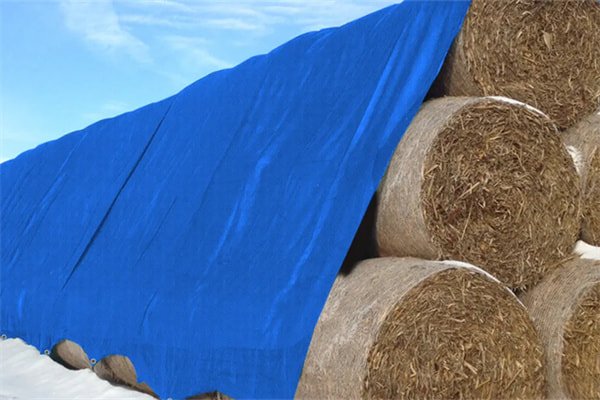Farming is a demanding profession, and safeguarding your harvest is a top priority. Among the many tools available to farmers, hay tarps play an indispensable role in preserving the quality of stored hay. Designed to shield hay from harsh weather conditions, these tarps prevent moisture damage, mold growth, and nutrient loss, ensuring that your livestock receives the best feed possible.
The Importance of Hay Cover Tarps
Weather can be unpredictable, and even a single rainstorm can ruin tons of hay if left unprotected. This is where hay cover tarps come in. These tarps are specifically engineered to cover hay bales, protecting them from rain, snow, and ultraviolet (UV) rays. Unlike ordinary tarps, hay cover tarps are often made with materials that resist tearing and provide long-lasting coverage, reducing the frequency of replacements. For farmers, this translates to both economic savings and better quality feed throughout the year.
When selecting hay cover tarps, it’s crucial to consider the size and shape of your hay bales. Round bales, square bales, and stacked hay require different coverage solutions. Many modern hay tarps feature reinforced grommets and tie-down systems, making it easier to secure the tarps even in windy conditions. This level of practicality ensures that your investment in hay remains protected, regardless of the season.
Heavy Duty Hay Tarps for Maximum Protection
For farms that experience extreme weather conditions, heavy duty hay tarps offer an extra layer of security. These tarps are constructed from high-strength polyethylene or woven fabrics that are UV-resistant, waterproof, and tear-resistant. Heavy duty hay tarps can withstand harsh winds, heavy snow, and prolonged sun exposure, making them ideal for long-term storage.
Investing in heavy duty hay tarps can prevent significant financial losses. Wet or moldy hay not only reduces feed efficiency but may also pose health risks to livestock. By covering your hay with robust, durable tarps, farmers can extend the storage life of their harvest and ensure consistent feed quality throughout the year.
Choosing the Right Hay Tarps for Your Farm
Selecting the proper hay tarps involves more than just choosing the largest or cheapest option. Farmers should evaluate factors such as material thickness, UV resistance, waterproofing, and ease of handling. Many tarps come with reinforced edges and grommets, allowing for secure fastening and minimizing movement during storms.
Additionally, storage practices play a role in maximizing the lifespan of your hay tarps. Keeping the edges of the tarps elevated and allowing airflow underneath can prevent condensation and reduce the risk of mold. Regular inspections for tears or loose fastenings can also prolong the tarp’s effectiveness, ensuring your hay remains protected season after season.
Conclusion
In modern farming, protecting your hay is as important as harvesting it. Hay tarps, hay cover tarps, and heavy duty hay tarps offer essential protection against the elements, safeguarding your investment and supporting the health of your livestock. By choosing high-quality materials and practicing proper storage techniques, farmers can ensure that their hay remains dry, nutritious, and ready for use year-round.
Investing in reliable hay tarps is more than just a practical choice—it’s a strategic decision that enhances farm efficiency, reduces waste, and promotes sustainable livestock management.


 Instant
Quote
Instant
Quote Email
Us
Email
Us